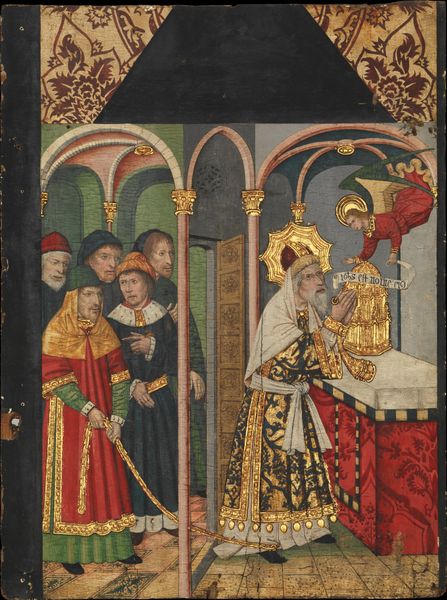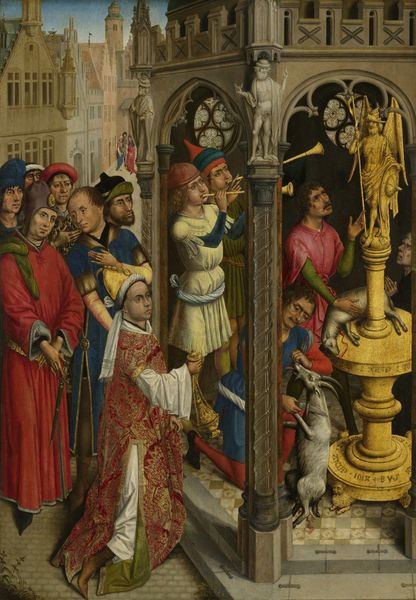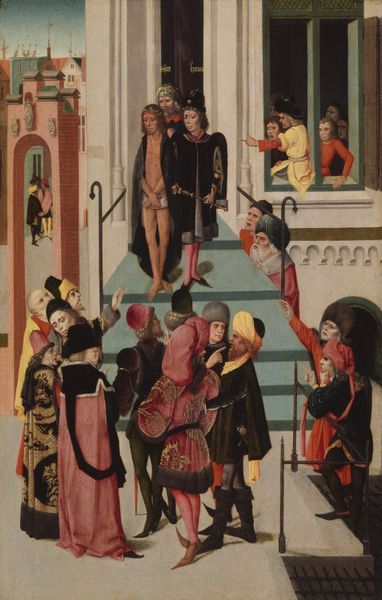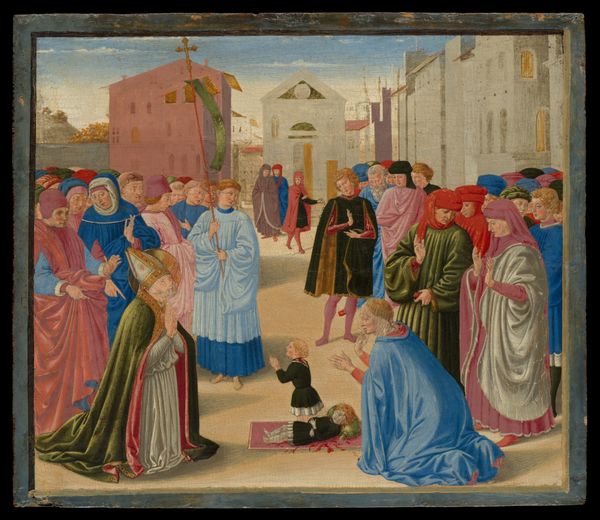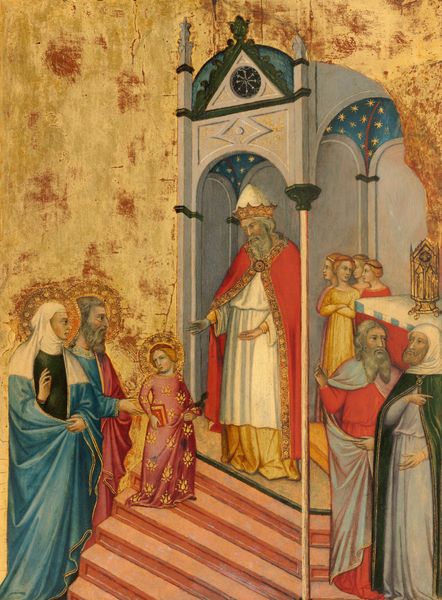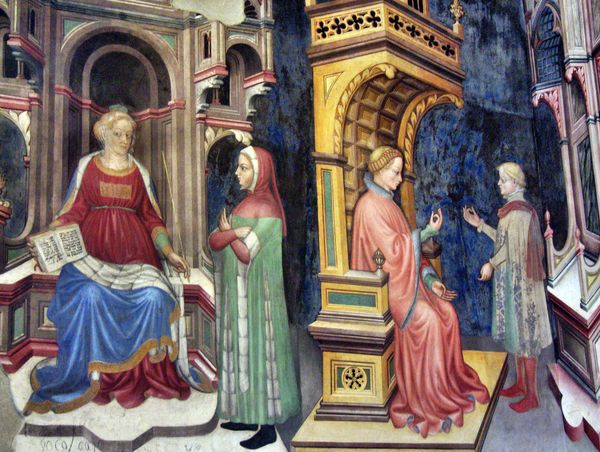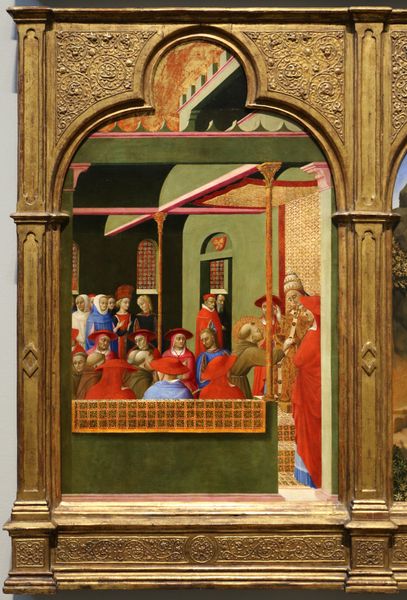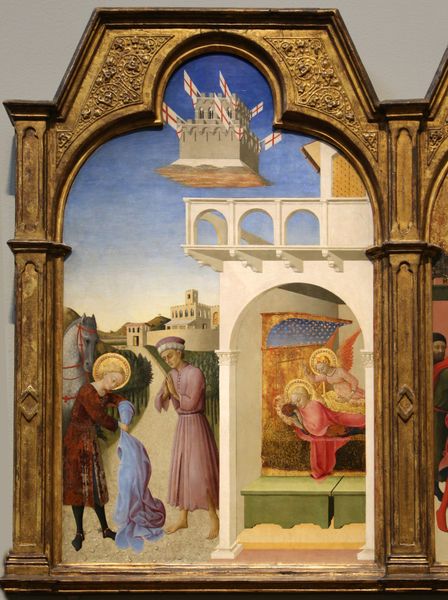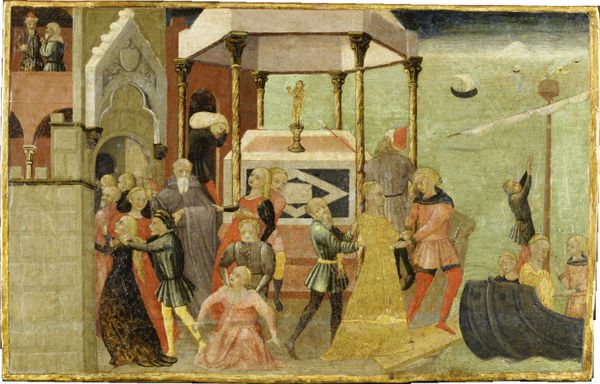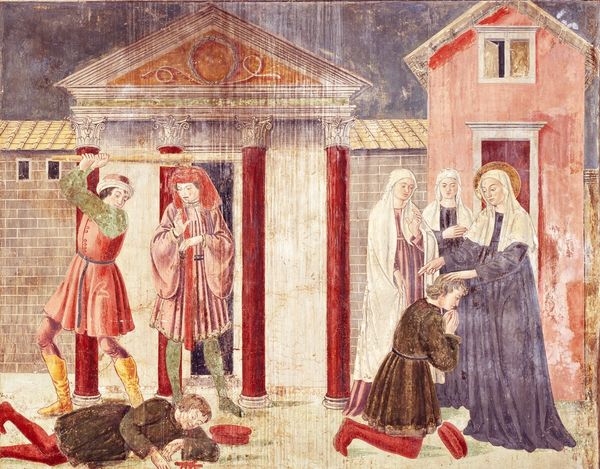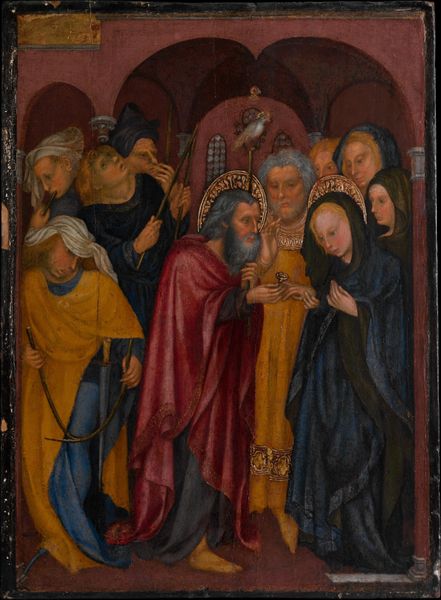
tempera, painting
#
medieval
#
narrative-art
#
tempera
#
painting
#
history-painting
#
international-gothic
#
mixed media
Dimensions: support height 83 cm, support width 61 cm, thickness 1.3 cm, height 82 cm, width 61 cm, depth 7.2 cm
Copyright: Rijks Museum: Open Domain
Curator: Looking at this painting, the first thing that strikes me is its narrative complexity, a world built of many smaller scenes. Editor: Indeed, it has the quality of a dream, doesn't it? Soft, stylized figures moving across a flattened landscape. This must be the "Four scenes from the legend of St Elizabeth of Hungary", tempera on panel, from around 1500. Curator: Precisely. And an exquisite example of International Gothic style! But note how the panel’s divisions reflect a medieval understanding of time. Different moments are shown simultaneously within the same frame. A very specific, non-linear construction of visual history. Editor: It certainly gives an insight into how people processed their narratives, but I see symbols layered within symbols. The figures around Elizabeth, note their positioning, and the architecture, so simplified it becomes almost emblematic. It reads as both worldly and otherworldly. Curator: The depiction of Elizabeth distributing alms is a key aspect of her iconography. It underscores her commitment to the poor, a significant element in understanding her role as a saint. It reflects the social and religious expectations placed on women of her stature. Editor: Notice also the strategic placement of certain objects in this representation of her life. For instance, the crown and clothing underscore not just rank but also how, in these narratives, saints reconcile earthly power with spiritual grace. That halo says it all, a pure life lived amidst royal duties. Curator: The painting functioned, most likely, as a devotional object in a private setting. Its visual language served to reinforce not only faith but also particular notions of power and piety during a period of significant social change in Europe. Think of the historical tensions it represents: noble obligations against a growing merchant class. Editor: Thank you for clarifying. It is such a striking confluence of legend and material reality. It's given me so much to think about concerning our collective narratives of saintly figures and our use of art in creating social role models.
Comments
No comments
Be the first to comment and join the conversation on the ultimate creative platform.
